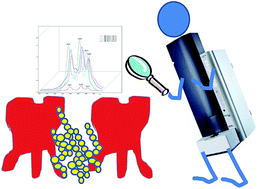A brief case study demonstrating the applicability of MALDI mass spectrometry for detecting bacteria in dental samples
Abstract
Samples collected from a gum infection site from a volunteer during surgery were directly analyzed using matrix assisted laser desorption mass spectrometry (MALDI-MS). This paper reports for the first time, the use of MALDI-MS for direct, rapid and sensitive analysis of bacteria from dental samples. The successful detection was due to the extraction of the sample in a microvolume of extractant (water) followed by preconcentration via vortexing coupled with centrifugation. A significant peptide cluster has been identified at the infection site, belonging to Human neutrophil peptides (HNPs). We were able to identify the presence of Streptococcus mutans in the dental samples, using MALDI-MS. This is a bacterium widely reported to be responsible for dental caries at dental infection sites. This approach for the first time reports and validates the unequivocal use of MALDI-MS in dental analysis yielding adequate information in a rapid way (only several minutes) leading to culture free detection of bacteria. This demonstrates that MALDI-MS can be applied as a rapid and sensitive tool for rapid clinical mass spectrometry (RC-MS) in future.


 Please wait while we load your content...
Please wait while we load your content...